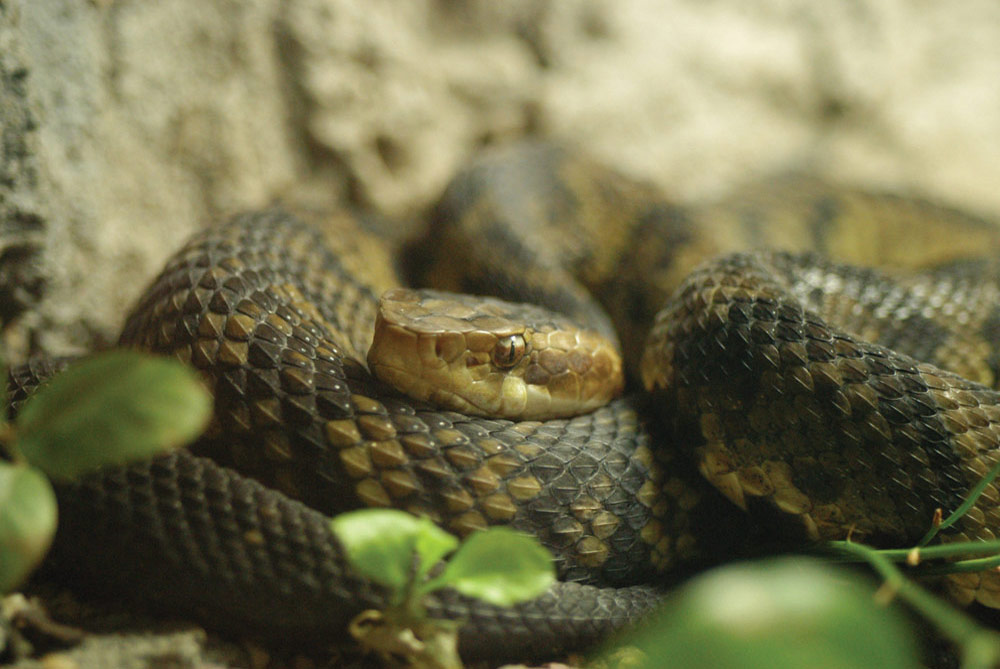Category:
ReptilesAbout
Eastern Cottonmouth
Eastern cottonmouths (Agkistrodon piscivorus piscivorus) are one of the three venomous snakes found in Virginia. They are heavy bodied snakes that can reach over 70 inches in length, but typically are between 36 and 48 inches. Cottonmouths are typically olive to black in color with large, dark crossbands across the body. The crossbands on the cottonmouth are wider on the sides than on the back and project on to the belly. Young cottonmouths are more brightly colored, have more noticeable crossbands, and have a bright yellow tail tip.
In Virginia, cottonmouths are more common south of the James River in the Coastal Plain. However, there are populations north of the James River in Newport News and York County. They inhabit swamps, lakes, ponds and marshes. Cottonmouths consume a wide variety of prey, including fish, amphibians, reptiles and small mammals. They can hunt on land or in water. Young use their bright tail tips as a lure to attract food.
Cottonmouths mate in the spring and occasionally fall. Males will engage in a combat dances in order to gain access and reproduce with females. Cottonmouths give live birth in the late summer or early fall, averaging about seven babies each litter. Females only give birth every two to three years.
Cottonmouths are generally not aggressive and often retreat before being detected. However, cottonmouths will stand their ground if they cannot escape. They may vibrate their tails, flatten and elevate the head, and open their mouths to reveal the white inside. If continued to be molested, cottonmouths may bite out of self defense.
Eastern Cottonmouth Information from the Virginia Department of Game and Inland Fisheries
Help pay for my food and care at the Virginia Living Museum by adopting me today.






